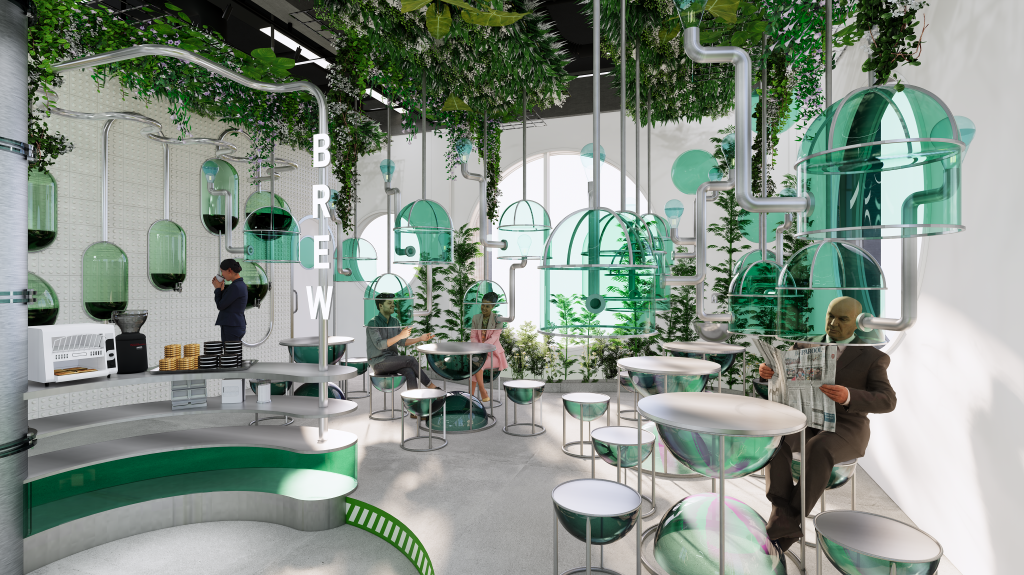
We can’t see air, but it’s all around us. We can’t live without it but we take it for granted. Nature’s air-conditioner keeps our air clean however in the post-industrial revolution years, industrial, commercial, and domestic sources have contaminated the air we breathe. When nature cannot manage these pollutants that become concentrated and exceed safe limits, it becomes air pollution. Air is essential to life, but we become concerned only when its quality is severely diminished.
Real-time pollution ranking for cities on the IQAir website is evidence that pollution levels in Shah Alam and Petaling Jaya is somewhat of a concern. Vehicular emission and the transboundary open burning contribute to poor air quality in our country and at its worst in 2019 hit PM2.5 concentration which is 1.6 times above the WHO annual air quality guideline value.
The depletion of quality air resources has made air no longer a free resource, people out there with cash in their pockets can buy air in a jar or can. Societies response should be to fix the problem instead of mitigating its effects.
The situation worsened when airborne viruses have become a major concern. With the Covid-19 pandemic, wearing a face masks has become the norm. Prolonged mask-wearing during office hours makes breathing more difficult. For people with Chronic Obstructive Pulmonary Disease (COPD), a group of diseases that cause airflow blockage and breathing-related problems, face masks are intolerable causing adverse effects such as dizziness, acne, and impaired cognition.
Furthermore, people in industrialized countries on average spend 90% of their time indoors. Thus, the importance of indoor air quality becomes a crucial matter in interior design. Inadequate ventilation caused by heating, ventilating, and air conditioning (HVAC) systems that do not effectively distribute air to people in the building, is thought to be an important factor in sick building syndrome. The research shows 20% to 60% of office occupants suffer from the sick-building syndrome.
American Society of Heating, Refrigerating and Air-Conditioning Engineers (ASHRAE) has recognized that polluted urban air requires the installation of treatment such as filtration for which the carbon-impregnated filters are generally applied in HVAC. The human body reacts indifferently to the toxins. Some are highly sensitive to dust, while others may be allergic to mold.
Inadequate ventilation will exaggerate small problems such as deteriorating fiberglass insulation or cooking fumes into a much more serious indoor air quality problem. Common products in the interior such as paint, insulation, rigid foam, particleboard, plywood, duct liners, exhaust fumes, and other chemical contaminants either from indoor or outdoor, and biological contaminants have high possibilities to be trapped inside by the HVAC system. As the air is recycled using fan coils, the overall oxygenation ratio drops and becomes harmful.
Thus, Breathify office design aims in creating a clean air accessible environment and allowing human connection while following safety measures and sustaining isolated work habits. ASHRAE suggests filtration with HEPA, or high-MERV rated filters in HVAC systems as an effective and energy-saving way to effectively capture viruses that cluster in larger particles. This reduces the viruses’ concentration thus minimizing the transmission risk. Ultraviolet germicidal irradiation (UVGI) in a building’s HVAC system is also one approach to improving air quality and reducing the health risks of its occupants. UVGI technology continues to make advancements in the field of air disinfection.
The technology has expanded from its origins in water treatment to being used for air treatment in offices.
Other than improving the indoor air quality technology, we can play with the scent in the office. Aromatherapy is thought of as both an art and a science and recently has gained more recognition in the field of science and medicine. People have been using natural plants extracts to promote health and well-being since ancient civilization. The aromatic and scents of nature seems to enhance the users’ physical and psychological well-being.
In the Breathify office, 4 aromatherapy pods designated with different scents have different functions and benefits to the users. By incorporating the aromatherapy treatment through the sense of smell and skin absorption using diffusers, aromatic spritzers, and inhalers, users can interact with the structures by generating the mechanism through movement, which at the same time encourages exercising in the office.
Today workplaces have evolved. The increasing trend of bringing the outdoors into the workplace through implementation of the principles of biophilic design has become significant. The concept of biophilic design is used within the Breathify office using direct nature, indirect nature, and space and place conditions to increase occupant connectivity to the natural environment. Turning out the resultant benefits such as reductions in staff stress levels and absenteeism in the office, we can see the importance they have on workplace well-being and staff retention in an office. While in the Breathify office, the access to natural light and panorama views will likely boost productivity and energy levels of users within those spaces.
Main colors of white, orange, and shades of teal and green are embraced in the office design, having an impact on staff well-being. White color on walls reflect light, brightens up spaces and saves energy consumption; Orange color on some structures encourages social interaction in a fun, conversational way and lastly teal and green color create a calm and relaxing atmosphere. Incorporate natural features like grass carpet mimic the outdoors allowing the users to lose themselves in the scenery.
In the Breathify office, plants act as natural oxygen generators and humidifiers. Subsequently, improve concentration levels in the office as they help absorb noises and create an escape zone. Also, the office provides different spaces for people to collaborate within.
As people are becoming increasingly aware of our impact on the environment, sustainability in office design has increased commensurately in popularity. Certifications such as LEED are a great way to assess the sustainability of buildings infrastructure. Our designs should focus on maximizing the circularity of materials, reduction in carbon footprint through the incorporation of eco-friendly practices and high-efficiency systems like LED lighting, and take advantage of natural light and passive ventilation. Taking into consideration a building’s energy usage and waste, office spaces should stick to low-emission materials and eliminate volatile organic compounds materials.
On the whole, the concept of a Breathify office is to create a social hub where clean air is accessible and achieved through the implementation of the above-mentioned elements.
The concept is ideal to build a workspace designed around social interaction, collaboration, and relationship building while mitigating its contribution to climate change.
Here’s a video further explaining the Breathify Office space:
